You can effectively block foundation mouse entry by sealing cracks with steel wool and caulk, covering vents with quarter-inch hardware cloth, and filling gaps with hydraulic cement. Remove vegetation within three feet of your foundation, screen crawl spaces with fine mesh, and seal pipe penetrations with expanding foam. Install weather stripping around access points and repair settling cracks promptly. These proven methods cost under $50 each and require only basic tools you likely already own.
Inspect Foundation Walls for Cracks and Gaps
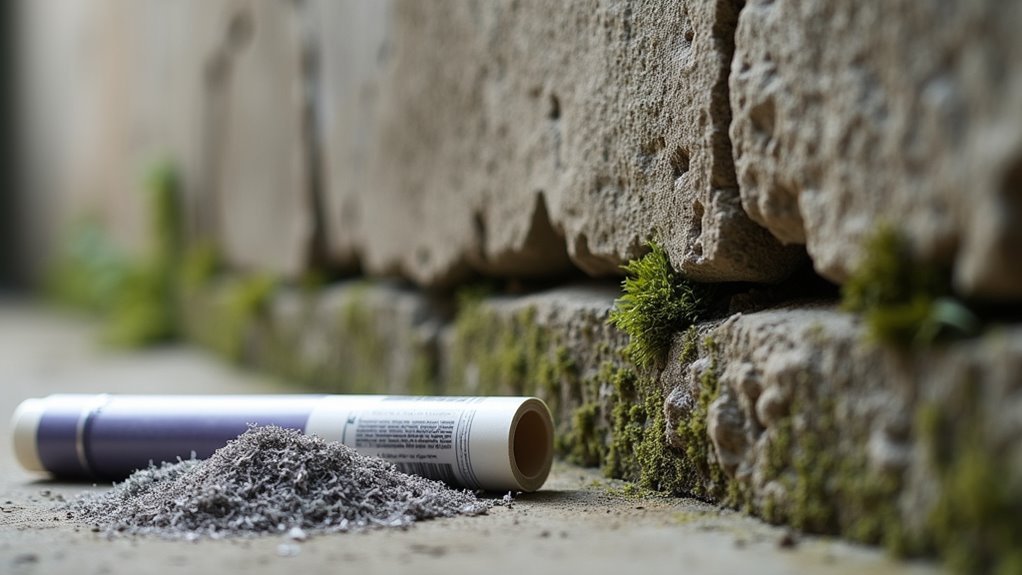
Foundation walls serve as your home’s first line of defense against mice, but even tiny cracks and gaps larger than 1/4 inch can become superhighways for these persistent invaders.
When you inspect foundation walls, you’ll need mirrors and flashlights to spot dark gaps and rub marks that reveal active rodent pathways. Pay special attention to deteriorating mortar joints in older homes, as these weakened areas often require tuck pointing for proper sealing.
Focus on seams where different foundation materials meet, since these junctions frequently hide overlooked entry points.
Effective rodent exclusion depends on regular monitoring, as your foundation’s settling and shifting creates new gaps and cracks over time. Thorough inspections help identify vulnerabilities before mice establish access routes.
Seal Small Openings With Steel Wool and Caulk
Once you’ve identified cracks and gaps in your foundation walls, steel wool becomes your most effective weapon for sealing openings up to 1/4 inch in diameter. Mice can’t chew through this material, making it an excellent barrier against mouse entry.
Start by stuffing steel wool firmly into each gap, then apply high-quality caulk over the steel wool to create a permanent seal. This combination approach guarantees maximum protection while preventing water infiltration.
- Use flexible, weather-resistant caulk that withstands temperature fluctuations and moisture
- Pack steel wool tightly into openings before applying the sealant layer
- Inspect sealed areas regularly for wear or new gaps from foundation settling
This dual-layer method blocks rodent access effectively while protecting your foundation from potential water damage.
Use Hardware Cloth to Cover Large Foundation Vents
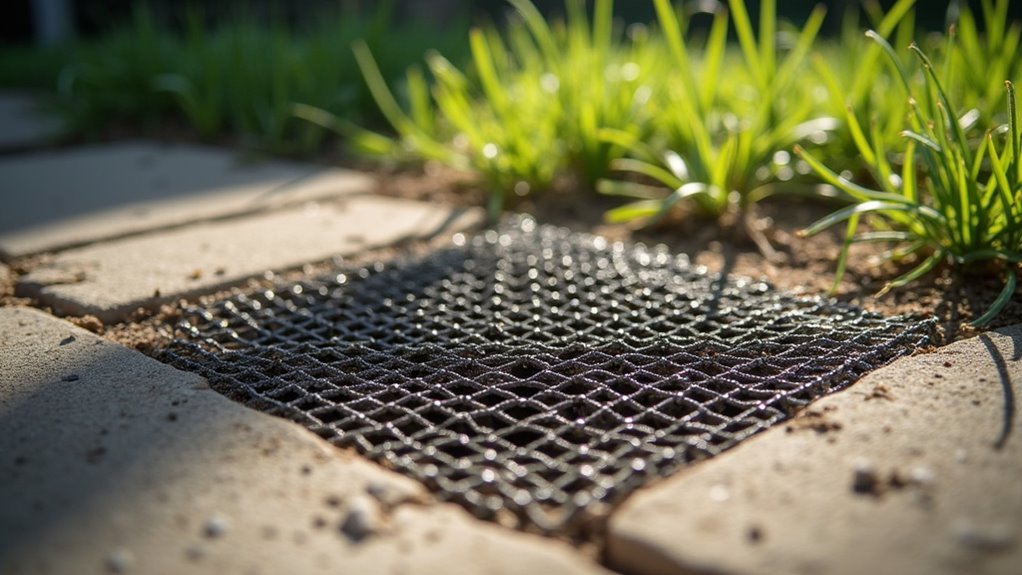
Large foundation vents present significant entry points for mice, but hardware cloth offers an affordable solution that maintains proper airflow while blocking unwanted visitors.
You’ll want to select 1/4 inch hardware cloth, which effectively prevents mouse entry while ensuring adequate ventilation. When installing this wire mesh material, secure it firmly to prevent mice from gnawing through or displacing it.
Regular inspections are essential for effective mouse control. Check your hardware cloth periodically for damage or rust that could compromise its integrity.
Inspect your hardware cloth regularly for signs of damage or rust that could allow mice to breach your defenses.
This cost-effective method typically costs less than other exclusion techniques while providing durable protection.
For maximum effectiveness, combine hardware cloth installation with sealing gaps around your foundation’s base. This all-encompassing approach creates multiple barriers against these persistent entry points.
Fill Mortar Joint Gaps With Concrete Mix
While hardware cloth handles larger openings, deteriorated mortar joints between foundation blocks create smaller but equally problematic entry points that require a different approach. To fill mortar joint gaps effectively and prevent mouse entry, you’ll need to use concrete mix as your primary solution.
Start by cleaning out old, crumbling mortar thoroughly to guarantee proper adhesion. This preparation step is vital for creating a lasting seal that mice can’t penetrate.
- Apply concrete mix in small sections using a trowel to push material deep into gaps
- Match the color of existing mortar with additives for aesthetic consistency
- Smooth the surface completely to eliminate any remaining entry points
Regular inspection and maintenance of these repairs guarantees continued protection against mouse entry through foundation vulnerabilities.
Install Weather Stripping Around Foundation Access Points
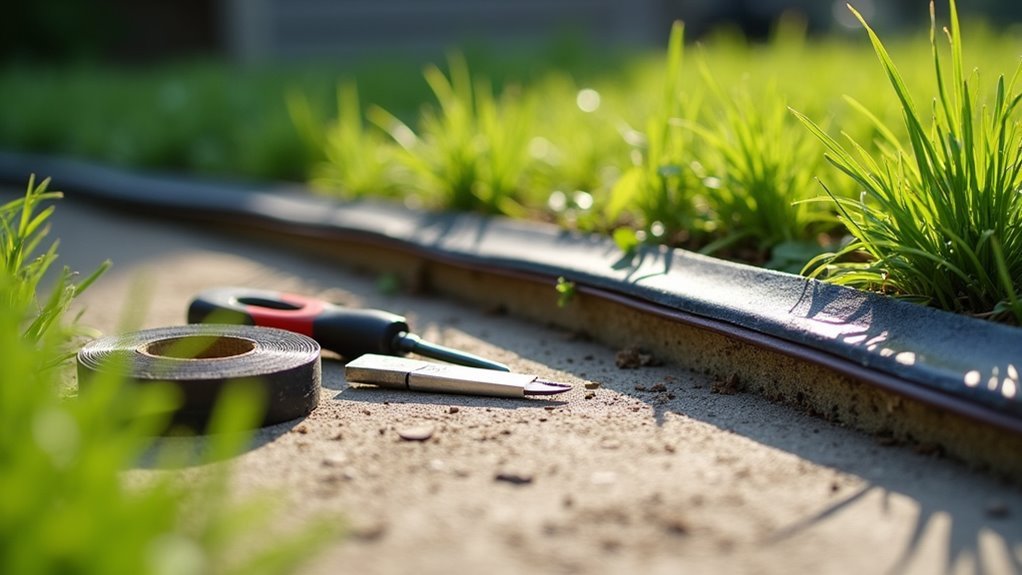
Several foundation access points around your home’s perimeter provide convenient entry routes for mice if they’re not properly sealed. Weather stripping creates an effective barrier by forming tight seals around these vulnerable areas, blocking mouse entry through gaps and cracks.
| Material | Price Range | Durability | Best Use |
|---|---|---|---|
| Rubber | $15-$30 | High | Foundation vents |
| Foam | $10-$20 | Medium | Door frames |
| Vinyl | $12-$25 | High | Windows |
| Felt | $8-$15 | Low | Temporary fixes |
Choose high-quality materials like rubber or foam that withstand outdoor conditions and maintain integrity over time. Installation costs typically range from $10 to $30 per roll. Apply weather stripping to garage doors, entry doors, and foundation access points for thorough protection. Regular inspection guarantees continued effectiveness against mouse intrusion.
Block Weep Holes With Copper Mesh
Pack copper mesh tightly into weep holes to create an impenetrable barrier that mice can’t chew through or dislodge.
These ventilation openings in brick walls become prime mouse entry points when left unsealed, making copper mesh your most reliable defense.
Unlike other materials that deteriorate quickly, copper mesh won’t rust or break down over time, providing lasting protection against rodent intrusion.
Copper mesh delivers permanent rodent protection without degradation, unlike temporary materials that weaken and fail over time.
Simply cut the mesh to fit each opening and press it firmly into place, ensuring no gaps remain.
Follow these essential steps for maximum effectiveness:
- Cut copper mesh pieces slightly larger than each weep hole opening
- Pack the mesh tightly to eliminate any potential entry gaps
- Conduct regular inspections to verify the mesh stays secure
This affordable solution transforms vulnerable weep holes into sealed barriers while maintaining proper ventilation.
Repair Foundation Settling Cracks With Hydraulic Cement
You’ll need to spot foundation settling cracks before they become major mouse highways into your home.
Clean out any debris and moisture from the crack, then mix and apply hydraulic cement according to the manufacturer’s directions for proper adhesion.
Press the cement firmly into the crack to create a tight seal that’ll expand as it cures, blocking both water and determined rodents.
Identify Settlement Crack Signs
Foundation settling creates telltale cracks that serve as highways for mice seeking entry into your home. These settlement cracks typically manifest as distinctive patterns that you can learn to recognize before they become major rodent pathways.
Look for these key indicators of foundation settling:
- Vertical or diagonal fissures running along basement walls or exterior foundation surfaces
- Stair-step cracking patterns in mortar joints between concrete blocks or bricks
- Gaps widening over time around basement windows, doors, or utility penetrations
You’ll often notice these cracks starting small but gradually expanding as soil continues shifting beneath your foundation.
Early detection allows you to seal potential mouse entry points before they become established rodent highways into your home’s interior spaces.
Apply Hydraulic Cement Properly
Once you’ve identified foundation settling cracks, hydraulic cement offers an affordable and effective solution for permanently sealing these rodent entry points. This fast-setting material expands as it cures, creating an impenetrable barrier against mice.
Start by cleaning the crack thoroughly, removing loose debris and dampening the area to improve adhesion.
Mix the hydraulic cement with water according to manufacturer instructions until you achieve a thick, paste-like consistency. Using a putty knife or trowel, force the mixture deep into the crack, then smooth it over the surface to seal completely.
Allow 24 hours for full curing before checking your work. The cement’s expansion properties guarantee these entry points remain permanently blocked, preventing future mouse infiltration through foundation settling cracks.
Seal Against Mouse Entry
While foundation settling creates natural pathways for mice to infiltrate your home, hydraulic cement provides a permanent solution that adapts to your home’s ongoing movement. This exclusion material expands during curing, creating an impenetrable barrier that effectively blocks rodent access points.
To seal against mouse entry successfully, you’ll need proper preparation and application:
- Clean cracks thoroughly, removing loose debris and old materials for ideal adhesion
- Use backing material for cracks exceeding 1/4 inch to prevent cement failure
- Follow manufacturer’s mixing ratios and curing times for maximum effectiveness
Your foundation repair isn’t complete without ongoing maintenance. Regular inspections guarantee your hydraulic cement seal remains intact, as settling can reoccur over time.
This proactive approach maintains continuous protection against mouse infiltration through foundation vulnerabilities.
Screen Crawl Space Vents With Quarter-Inch Mesh
You’ll need to select quarter-inch mesh screens that effectively block mice while maintaining proper crawl space ventilation.
Installing these screens requires basic tools like a drill, screws, and sealant to secure them properly around vent openings.
Regular maintenance involves checking screens monthly for damage, debris buildup, or gaps that could compromise their effectiveness.
Choosing Proper Mesh Size
Since mice can squeeze through openings as small as 1/4 inch in diameter, selecting quarter-inch mesh for your crawl space vent screens creates an effective barrier against these persistent intruders.
This mesh size strikes the perfect balance between blocking rodent entry and maintaining proper ventilation for your foundation.
When choosing the right mesh size, consider these factors:
- Material durability – Stainless steel mesh resists chewing and corrosion better than cheaper alternatives
- Airflow requirements – Quarter-inch openings provide adequate ventilation while preventing pest access
- Long-term maintenance – Quality materials reduce replacement frequency and ongoing costs
Don’t compromise on mesh size thinking larger openings will improve airflow.
The quarter-inch standard effectively deters mice and other small pests without greatly impacting your crawl space’s ventilation needs.
Installation Tools and Techniques
Three essential tools will make screening your crawl space vents straightforward: tin snips for cutting mesh, a drill with appropriate bits, and galvanized screws or heavy-duty staples for secure attachment.
Measure each vent opening carefully before cutting your quarter-inch mesh materials to guarantee proper coverage without gaps.
Position the mesh over the opening and secure it firmly using screws spaced every few inches around the perimeter.
For maximum effectiveness, you’ll want to seal any remaining gaps with caulk around the mesh edges.
These installation tools allow you to create a tight barrier that resists weather damage while maintaining ventilation.
Check your work regularly to verify the screening remains properly attached and functional.
Maintenance and Inspection Schedule
A consistent inspection routine forms the backbone of effective mouse prevention around your crawl space vents.
You’ll need to inspect these critical areas at least twice yearly to catch potential problems before mice establish access routes.
Schedule your maintenance checks strategically:
- Spring inspections – Examine vents after winter weather damage and before peak breeding season
- Fall preparations – Verify screens remain intact before mice seek winter shelter indoors
- Storm follow-ups – Check for damage after severe weather events throughout the year
During each inspection, you’ll want to examine the quarter-inch mesh screens for tears, clogs, or loose attachments.
Document your findings to track recurring issues and identify entry points that need immediate attention.
Replace damaged screens promptly to maintain your home’s defense against rodent intrusion.
Seal Pipe Penetrations With Expanding Foam and Sealant
Check every spot where pipes enter your home’s foundation, as these penetrations create perfect highways for mice to slip inside.
You’ll need expanding foam to fill gaps larger than 1/4 inch around these entry points. Clean and dry the area thoroughly before application to guarantee proper adhesion. The foam expands to create an effective barrier while providing moisture insulation.
However, expanding foam alone won’t permanently prevent mice from entering since they can chew through it. Apply a high-quality sealant over the cured foam for lasting protection. This two-step approach creates a robust barrier that rodents can’t penetrate.
For maximum rodent protection, layer expanding foam with quality sealant to create an impenetrable barrier that mice cannot chew through.
Schedule regular inspections of these sealed areas. Pipe movement from settling or temperature changes can create new gaps requiring immediate attention.
Remove Vegetation and Debris From Foundation Perimeter
You’ll want to create a clear zone around your home’s foundation by removing brush, weeds, and accumulated debris that mice use for shelter and nesting.
Keep mulch at least 18 inches away from your foundation walls to eliminate moisture-rich hiding spots that attract rodents.
Stack firewood well away from the house rather than directly against the foundation where it provides easy access and cover for mice.
Clear Brush and Weeds
Since mice seek shelter and nesting spots close to food sources, maintaining a clean perimeter around your home’s foundation becomes one of your most effective defensive strategies.
When you clear brush and weeds from around your foundation, you’re eliminating potential hiding spots that make mice feel secure enough to approach your home.
Focus on these essential clearing tasks:
- Remove all overgrown vegetation within three feet of your foundation walls
- Cut back any brush or weeds that create pathways leading directly to your home
- Maintain this cleared zone through regular seasonal maintenance
Proper Mulch Distance
Beyond clearing vegetation, the distance you maintain between mulch and your foundation plays a significant role in mouse prevention.
You’ll want to keep mulch at least 18 inches away from your foundation to create an effective barrier. Mulch retains moisture, creating an environment that attracts mice and encourages them to nest nearby. When mulch sits too close to your home, it provides perfect cover for mice enter points they might discover along your foundation.
This spacing also helps reduce moisture buildup against your foundation walls, which can create additional problems beyond rodent attraction.
Stack your mulch farther out in garden beds where it can still benefit your plants without offering mice convenient shelter near potential entry routes into your home.
Stack Firewood Away
Firewood storage creates one of the most overlooked mouse highways leading directly to your home’s foundation.
When you stack firewood away from your foundation—at least 18 inches—you’ll effectively block foundations from rodent invasion while keeping the wood accessible.
Here’s how to properly manage your firewood storage:
- Maintain proper distance: Keep stacks 18+ inches from foundation walls to prevent mice from using wood as a bridge
- Use raised platforms: Store firewood off the ground on pallets or platforms to eliminate ground-level nesting opportunities
- Clear surrounding areas: Remove weeds, brush, and debris around storage zones to eliminate natural shelters
This strategic placement disrupts mouse travel patterns and removes convenient nesting sites.
You’ll keep mice from establishing pathways while maintaining easy access to your firewood supply.
Frequently Asked Questions
What Can I Put Around Foundation to Keep Mice Away?
You can fill foundation cracks with copper mesh or steel wool, apply quality sealant to gaps, install 1/4 inch mesh screens over weep holes, and place peppermint oil-soaked cotton balls around the perimeter.
What Should I Block a Mouse Hole With?
You should block small mouse holes with steel wool packed tightly, then seal with caulking. For larger gaps, use backing material, copper mesh, and quality sealant since foam alone isn’t rodent-proof.
How Do I Stop Mice From Digging Under My Foundation?
Install wire mesh or hardware cloth around your foundation’s perimeter, extending twelve inches underground. Fill gaps with concrete or sealant, use gravel at the base, and maintain landscaping to eliminate shelter.
What Material Can Mice Not Chew Through?
You can’t go wrong with stainless steel or copper mesh since mice can’t chew through these materials. Hardware cloth made from strong wire also resists their gnawing effectively.
In Summary
You’ve now got nine proven methods to mouse-proof your foundation without breaking the bank. Don’t wait until you hear scratching in the walls—tackle these tasks during your next weekend project session. Most of these materials cost under $20 each and require basic tools you likely already own. Remember, mice can squeeze through openings smaller than a dime, so thoroughness beats speed. Your diligence today prevents costly pest control bills tomorrow.

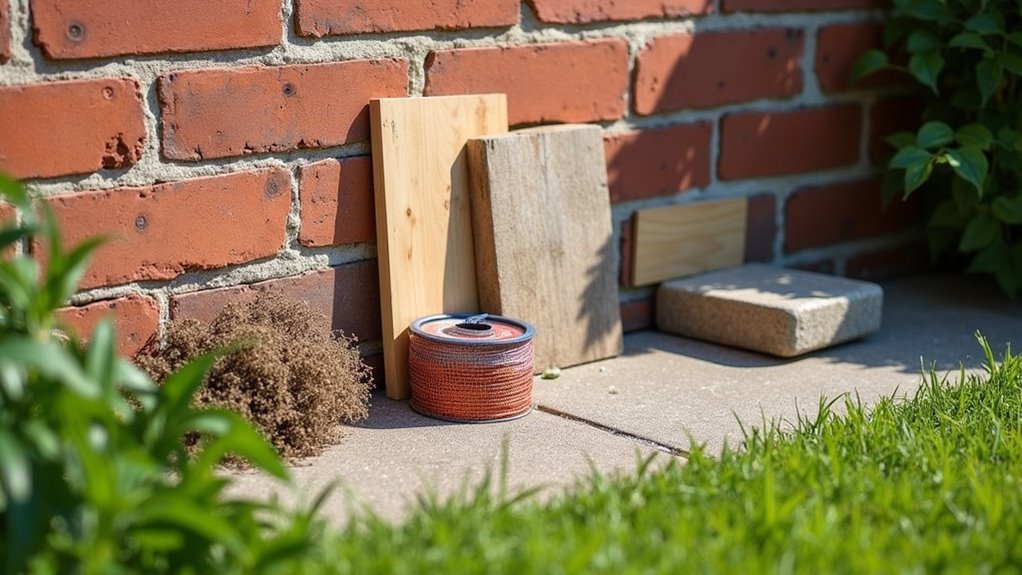
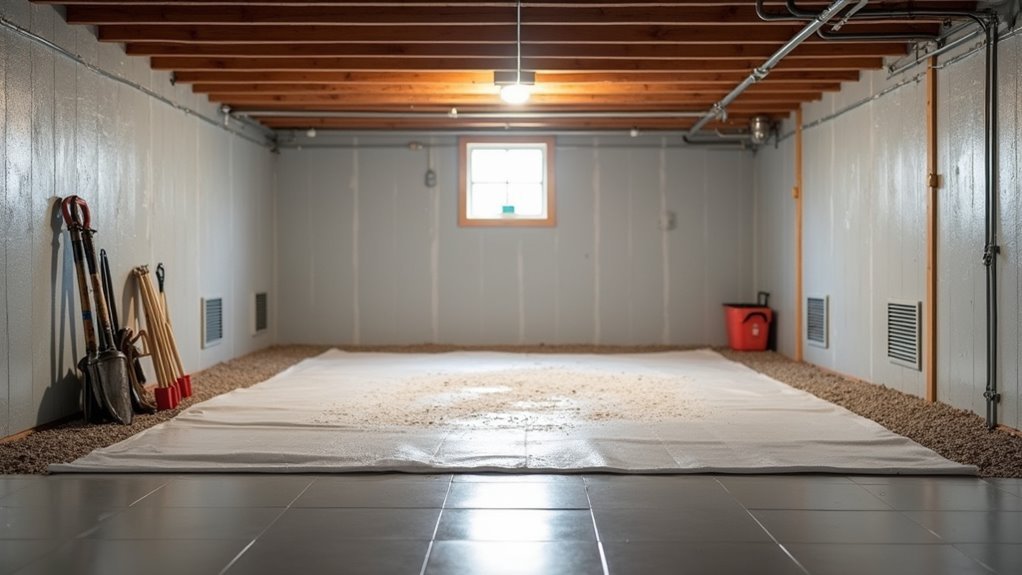
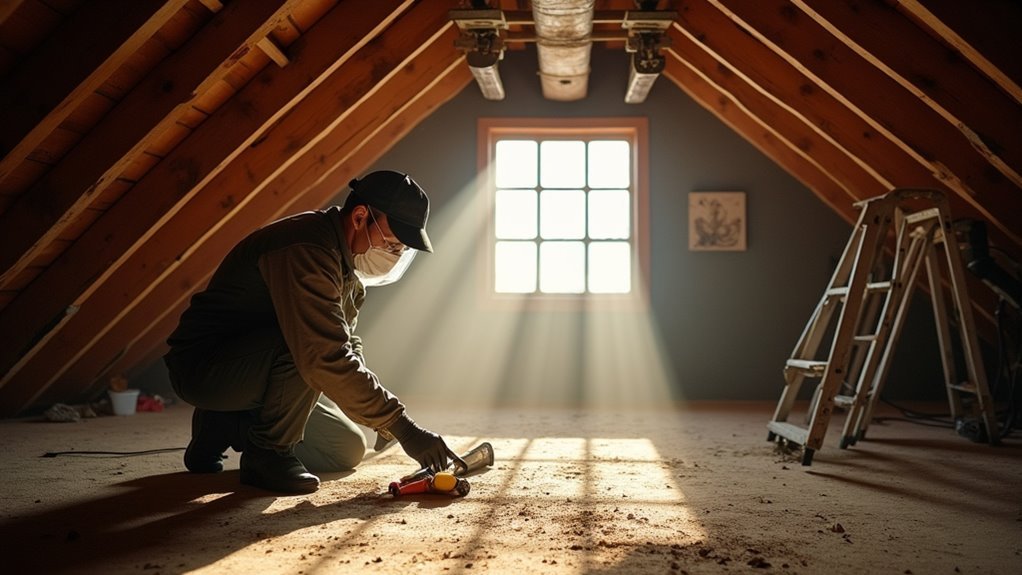
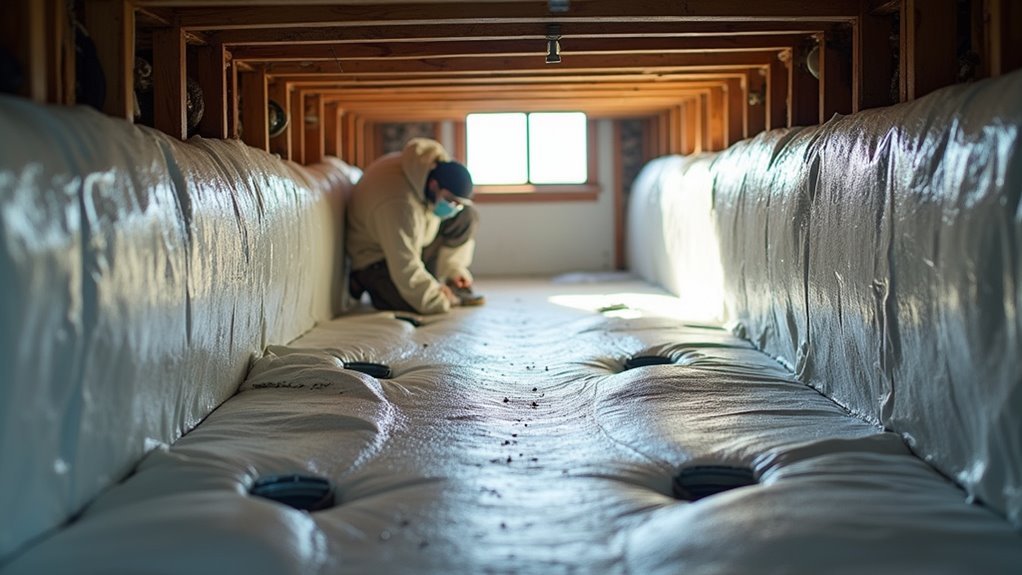
Leave a Reply